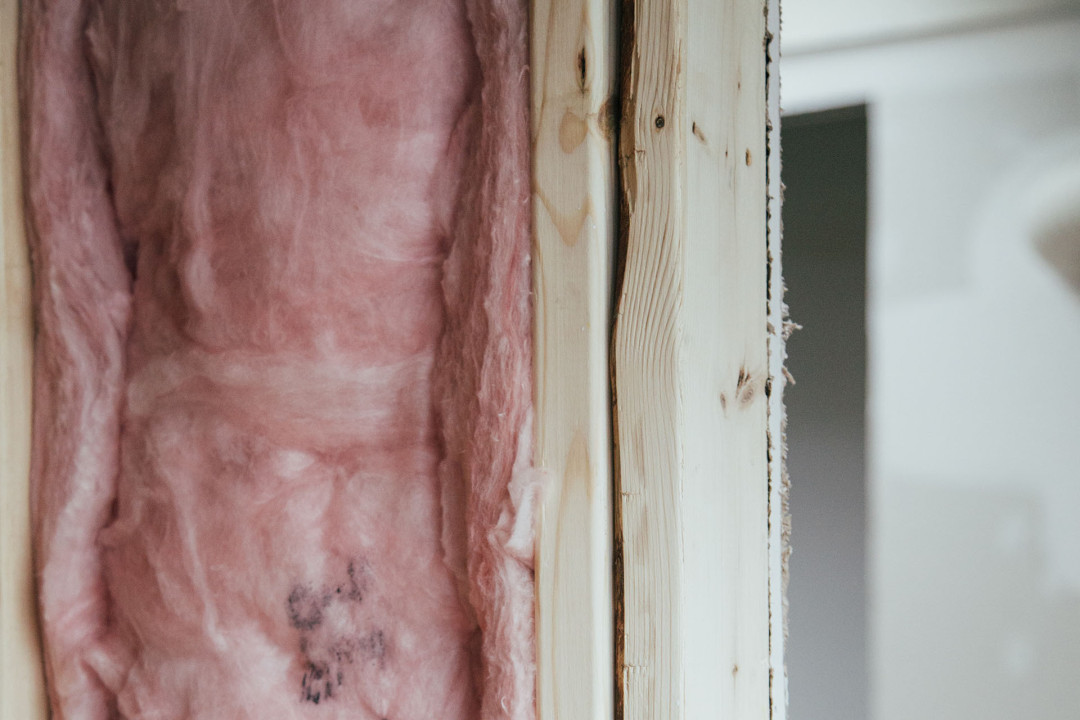Winter is here, and with it comes cooler days and colder nights. As the temperature drops, you may see your heating bill starting to rise. Or even worse, you may find that you're shivering in your home, struggling to stay warm without breaking the bank. If that's the case, it's time to take off those winter coats and enjoy the warmth of your well-insulated home. That's right! You don't have to shiver—upgrade your insulation!
Is Your Attic Insulation Due for an Upgrade?
If you're getting ready to upgrade your insulation, there is no better place to start than in your attic. As we all know, heat rises. So if hot air is escaping your home, the most likely path is right through your attic. We call this the chimney effect. Hot air rises through your attic like a chimney and escapes your home. As it does, it creates a vacuum in the lower parts of your home that sucks in cold air through vents and anywhere in the house that is not sealed.
Before you start, you might want to figure out just how much insulation you need in your. If you are upgrading the attic insulation in an existing home, you should account for the insulation that is already there. Hopefully, there is at least some insulation in the attic, so your upgrade will be adding insulation, not laying it down for the first time. One way to figure out how much insulation you need—and how much you could save—is to use the Home Energy Saver online energy audit questionnaire. You can fill in some information about your home and receive recommendations for upgrading your home's energy efficiency along with the potential savings.
You have two options for attic insulation. You could insulate your roof or insulate the floor of the attic. If you don't use your attic, or it is more of a crawlspace, insulating the floor is probably easiest. You can spray in loose-fill insulation that is both cheap and effective. Once you do that, you are basically deciding to treat your attic as outside your home, at least in terms of your heat and air conditioning. However, if you plan to finish your basement, you should insulate the ceiling, i.e., the roof. Insulating your roof includes the attic within your home's conditioned air envelope and will make your attic more pleasant to be in. In a humid climate like Atlanta, insulating your roof can also prevent your attic from overheating. A hot, moist attic full of loose-fill insulation can create a musty smell that could be carried into your home.
Basements and Crawl Spaces
We've already mentioned the well-known fact that hot air rises. But that doesn't mean that you can ignore the air beneath your home. Your home can lose heat in any direction, so you can't just insulate the top. You may be familiar with the feeling of walking into your basement and experiencing a shocking drop in temperature. Because your basement is below ground, it isn't warmed by the ambient air temperature or sunlight, so it stays cold year-round. In the winter, that could mean that as much as 30% of your energy loss is through your basement.
Similar to your attic, you have two options for insulating your basement. You could insulate the ceiling underneath the floor above, which would mean you are excluding your basement from your home's heating envelope. Or, if you want to finish your basement or just keep it warm in the winter, you could insulate the basement walls and treat it as part of your home. If you plan to insulate the walls and make the basement part of your home, you also need to seal the basement. That means closing any vents other than those required for appliances like your furnace and water heater.
Surprisingly, making your basement part of your home by insulating the walls is actually cheaper than insulating the floor above. In most cases, the square footage of the walls is significantly less than the entire area of the ceiling/floor, so you'll save money on materials and insulation costs. In most homes, insulating the walls take only two-thirds of the material needed to insulate the floor above.

Save Money With Energy-Efficient Insulation
One of the most significant benefits of an insulation upgrade—aside from not shivering all winter long—is the money you will save on your energy bills. According to the US Department of Energy, home heating can account for 42% of your total energy costs in the winter. So even a slight improvement in your home's ability to hold onto hot air will make a significant difference to your energy bills. To find even more cost savings, many utility companies offer free home energy audits.
Sealing Air leaks
In addition to saving money with upgraded insulation, you can save money and reduce your environmental impact in other ways. One of the most significant contributions you can make to efficient home temperature control is sealing your home. As a child, did you ever open a window with the heat on only to have someone ask, "Are you trying to heat the outdoors!" That same thinning applies to air sealing your home. The more hot air escapes your home and the more cold air you let in, the harder your heating system has to work to keep a comfortable temperature in your home. So it doesn't make sense to increase insulation in some places if you are leaking air in others.
Common air leaks occur around windows and doors. Check the weather stripping around doors and window sills. Also, inspect the foundation of your home for cracks that could let air in and out of your home. One air leak many homeowners miss is their electrical outlets. Put your hand near or on an outlet, and you may be surprised by how cold it is. You can install foam gaskets behind the outlet to prevent air leakage. And don't forget to take a look at vents in your home. Whether it's a dryer vent, oven exhaust fan, or your chimney and flue, any opening that intentionally lets air out of your home has the potential to leak.
Save Money With Your Thermostat
One final way to save money on heating and decrease your impact on the environment is simply to turn down the heat. We're not suggesting you freeze all winter long, but there is a happy middle ground. Most energy guides recommend keeping your thermostat at 68º when you are home. You may need to wear long sleeves or a light sweater, but it is winter, after all. There's really no need to heat your home to tropical temperatures.
A smart or at least programmable thermostat can help even more. Keep the temperature at 68º when people are home and awake. If people leave the house during the day—for work or school, for instance—you can let the temperature drop a few degrees. At night you can also turn down the heat a few degrees. Sleep specialists agree that people sleep better when the room is cooler.
How to Compare Different Types of Insulation
Once you decide to upgrade your insulation, you have to make some choices. As we said above, one choice is about which spaces you intend to insulate. Are you insulating just the living quarters or including the basement and attic? Another decision is how much and what type of insulation you need. You can start with the handy insulation guide at Energy.gov. It divides the country into climate zones and identifies how much insulation you need and what R-value is recommended.
R-value is a measurement of thermal resistance, the insulation's ability to block conductive heat. As a refresher from science class, conductive heat is heat that is transferred by direct contact. So your walls, windows, roof, and floor heat up and transfer that heat into your home. Insulation resists that heat transfer. The higher the value, the better it prevents that heat transfer.
Most insulation indicated it's R-value per square inch. And as insulation gets thicker, its R-value typically increases. However, R-value can decrease if the insulation is compressed. So it doesn't make sense to shove more insulation than fits into a small space, like the space inside a wall. Also, if you use loose-fill insulation, as you add more insulation, it can compress under its own weight, limiting its thermal resistance. If you need to fit installation into a small space, consider using insulation with a higher R-value, so you get more resistance with less thickness.
DIY or Hire a Pro?
If you search online, you may find tutorials on how to install your own insulation. But even if you figure out how to install the insulation, you may not have all the benefits of a professional insulation service. Insulation can be more or less effective, depending on how it is installed. There's no point in spending time and money on your DIY insulation if you won't get the results you're after. And it can be hard to determine precisely how much and what type of insulation you need for your particular situation.
An insulation contractor like the insulation experts you'll find on TrustDALE can help you determine how much and what type of insulation you need. They can also ensure that the installation is done to the highest quality standards, so you get the results you paid for. And when you work with TrustDALE certified businesses, you benefit from Dale's 7-point investigative review process. You know that you can trust the quality, pricing, and customer service of every business in the TrustDALE community of trust. And every business is back by Dale's trademark $10,000 Make-It-Right™ guarantee.


